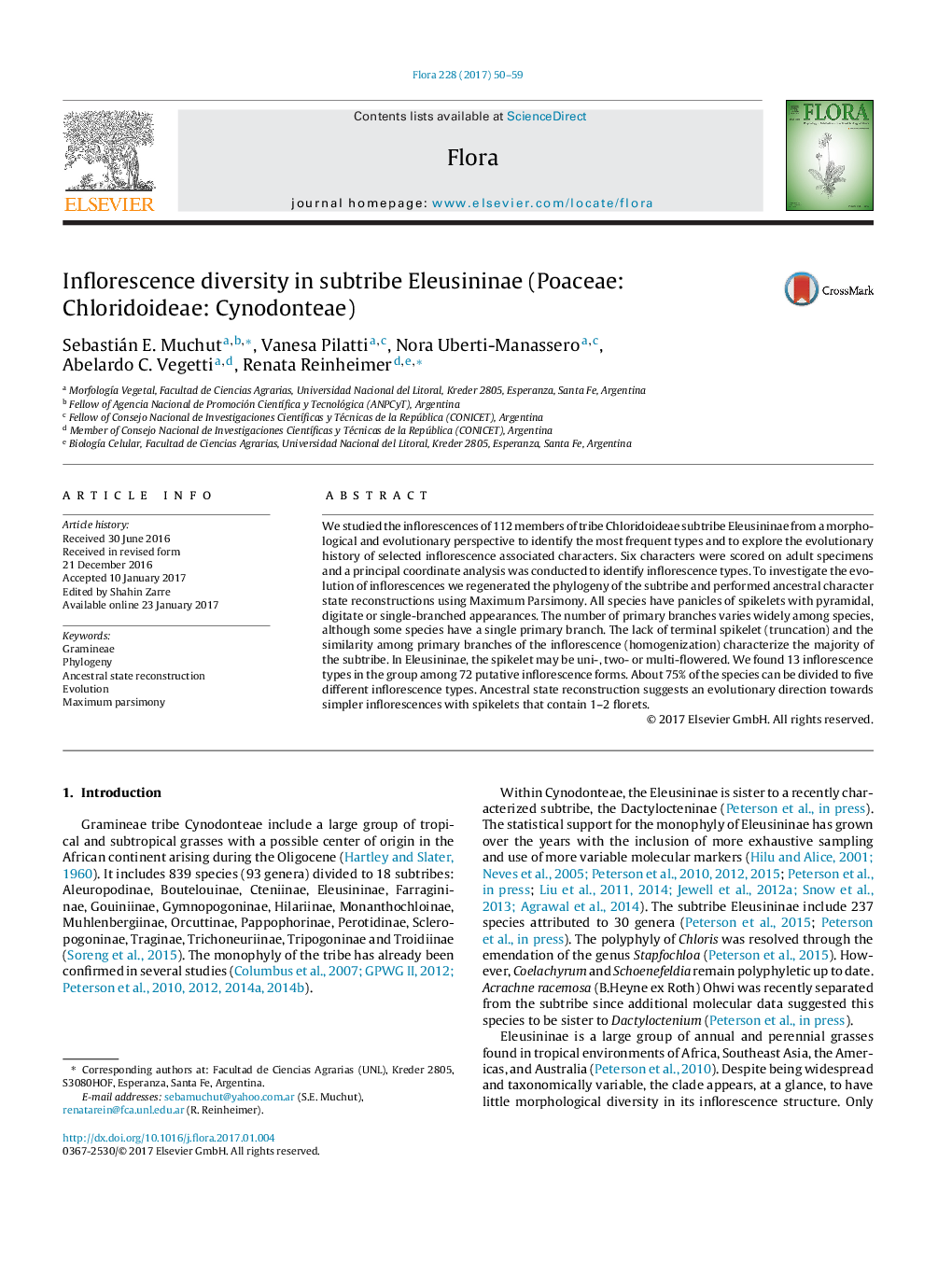| کد مقاله | کد نشریه | سال انتشار | مقاله انگلیسی | نسخه تمام متن |
|---|---|---|---|---|
| 5532344 | 1549931 | 2017 | 10 صفحه PDF | دانلود رایگان |

- There are 13 different inflorescence types among Eleusininae taxa.
- A fully homogenized and truncated digitate/pyramidal inflorescence represents the most probably ancestral state.
- The results suggest a reductive trend in inflorescence evolution.
We studied the inflorescences of 112 members of tribe Chloridoideae subtribe Eleusininae from a morphological and evolutionary perspective to identify the most frequent types and to explore the evolutionary history of selected inflorescence associated characters. Six characters were scored on adult specimens and a principal coordinate analysis was conducted to identify inflorescence types. To investigate the evolution of inflorescences we regenerated the phylogeny of the subtribe and performed ancestral character state reconstructions using Maximum Parsimony. All species have panicles of spikelets with pyramidal, digitate or single-branched appearances. The number of primary branches varies widely among species, although some species have a single primary branch. The lack of terminal spikelet (truncation) and the similarity among primary branches of the inflorescence (homogenization) characterize the majority of the subtribe. In Eleusininae, the spikelet may be uni-, two- or multi-flowered. We found 13 inflorescence types in the group among 72 putative inflorescence forms. About 75% of the species can be divided to five different inflorescence types. Ancestral state reconstruction suggests an evolutionary direction towards simpler inflorescences with spikelets that contain 1-2 florets.
Journal: Flora - Volume 228, March 2017, Pages 50-59